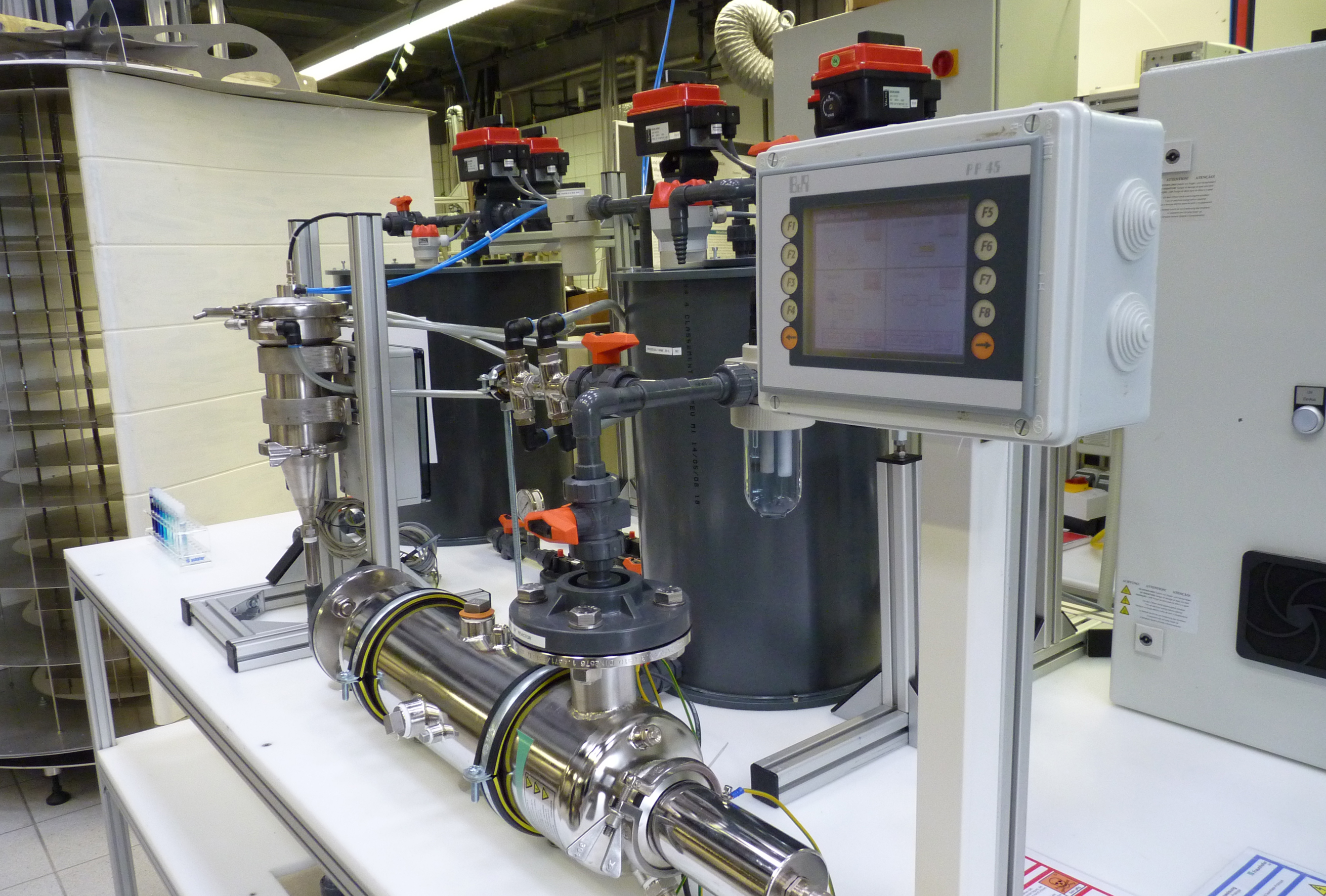Controlled wastewater treatment with UV light
Industrial wastewaters contain organic pollutants that are not treated in municipal wastewater treatment plants. Researchers of the Fraunhofer Institute for Interfacial Engineering and Biotechnology IGB in Stuttgart have been developing, in cooperation with European partners, an automated treatment system that breaks these organic pollutants down while simultaneously tracking the success of the treatment.
Whether it is steak or cheese, car frames or pistons, paint or paper: water is needed for the manufacture of food products, metal parts, chemicals, as well as the cleaning of the production machinery. A large portion of this process water is polluted with organic compounds that are not degraded biologically in wastewater treatment plants. In these cases, the wastewater has to be treated before it reaches the sewage canals. Current technology is approaching its limits, because dissolved pollutants cannot be removed by filtration. Membrane technology concentrates the pollutants instead of breaking them down, and thermal technology requires a lot of energy.
Under the European Union sponsored “Light4CleanWater” project, researchers from the Fraunhofer Institute for Interfacial Engineering and Biotechnology IGB have developed a cost-effective solution, which treats organic pollutants by oxidation and without the addition of harmful chemicals. Together with their partners, they have built a prototype that combines the oxidative UV treatment with a continuous analysis (measurement) of total organic carbon (TOC), used as an indicator of treatment success, and for automatic control.
In the reaction tank, a medium pressure or vacuum UV lamp shines high energy UV light into the wastewater. The powerful rays of 172 nanometer wavelength, invisible to the human eye, hit the water molecules and produce highly reactive hydroxyl radicals. These hydroxyl radicals set off a chain reaction that forms even more radicals. “These radicals transform organic pollutants into smaller and more biodegradable compounds such as short-chain organic acids”, process engineer Christiane Chaumette explains the effect of UV irradiation.
To make sure that only clean water leaves the system, samples are continuously taken and analyzed for the content of total organic carbon (TOC). Once the pre-set TOC limit is reached, the treated water is drained and new wastewater is pumped into the reaction tank. “The prototype can treat 100 liters of wastewater per hour in this way. Methylene blue was completely removed in just minutes during a laboratory test run. Even highly polluted wastewater from the paper industry was treated and TOC was reduced to the required limit”, comments Chaumette.
The prototype is now available for potential uses in industry for evaluation of the special wastewater cleaning characteristics since no two waters are identical. “Success of the treatment is not only dependent on the characteristics of the pollutants, but also on their concentrations and on the volume flow of the wastewater”, says the process engineer. These parameters are also pivotal for the estimation of energy use. “This data gives us a foundation for the design of cost-effective industrial systems, which effectively treat wastewater without the use of chemical additives” , adds Siegfried Egner, head of the Physical Process Engineering Department, referring to future work.
The research leading to these results has received funding from the European Union's Seventh Framework Programme [FP7/2007-2013] under grant agreement n° 232073. Project partners are SICO Technology GmbH (Austria), HECKMANN POLSKA Produkcja Metalowa i Maszyn Sp. z o.o. (Poland), UVASOL Limited (Great Britain), E.R.S. – Steuerungstechnik – GmbH & Co. KG and LFE Laboratorium für industrielle Forschung GmbH & Co. Entwicklungs KG (Germany), BAMO Mesure SAS (France), ADINSA Aditivos industrials y servicios para el agua S.L. and VILA Electroquimica, S.A. (Spain). Besides the Fraunhofer IGB, research partners also included the Spanish ITAV Technologias avanzadas inspiralia SL.
 Fraunhofer Institute for Interfacial Engineering and Biotechnology IGB
Fraunhofer Institute for Interfacial Engineering and Biotechnology IGB